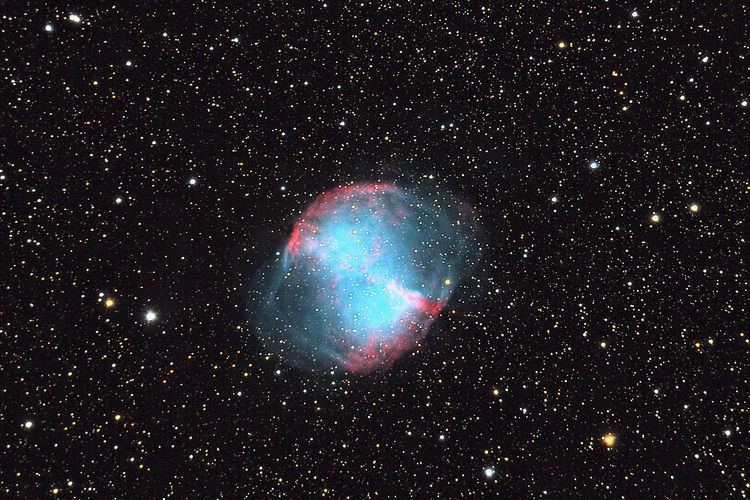Right ascension 19 59 36.340 Apparent dimensions (V) 8′.0 × 5′.6 Magnitude 7.5 Constellation Vulpecula | Declination +22° 43′ 16.09″ Distance to Earth 1,360 light years Absolute magnitude -0.6 Apparent magnitude (V) 7.5 | |
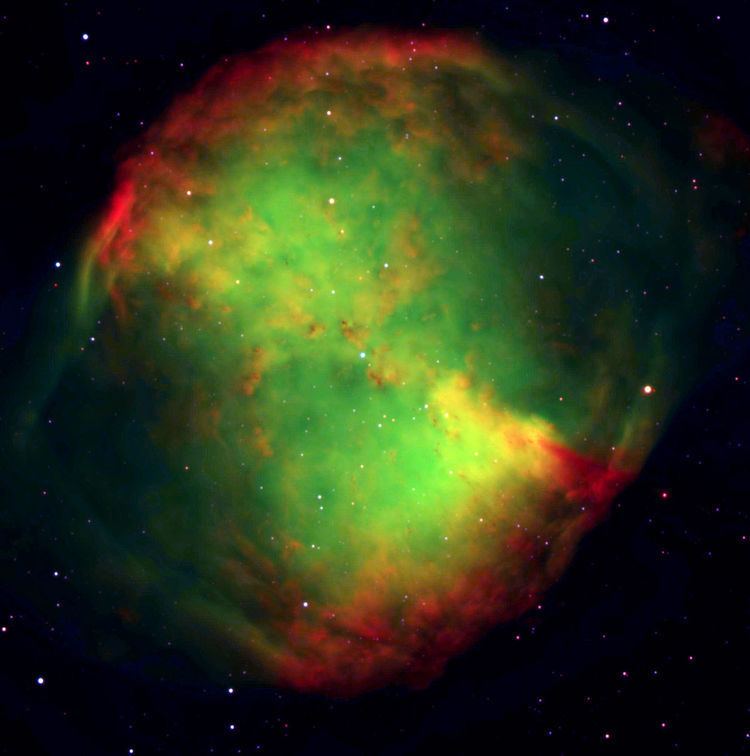 | ||
Radius 7016136234518805163♠1.44+0.21
−0.16 ly ly Notable features Central star radius is largest
known for a white dwarf. Designations NGC 6853, M 27,
Diabolo Nebula,
Dumb-Bell Nebula, Coordinates RA 19h 59m 35s | Dec +22° 43′ 16″ Similar Sagittarius Star Cloud, Trifid Nebula, Messier 30, Messier 22, Messier 36 | ||
Dumbbell nebula and biscuits m27 deep sky videos
The Dumbbell Nebula (also known as Apple Core Nebula, Messier 27, M 27, or NGC 6853) is a planetary nebula in the constellation Vulpecula, at a distance of about 1,360 light-years.
Contents
- Dumbbell nebula and biscuits m27 deep sky videos
- Little dumbbell nebula m76 deep sky videos
- Structure
- Knots
- Central star
- References
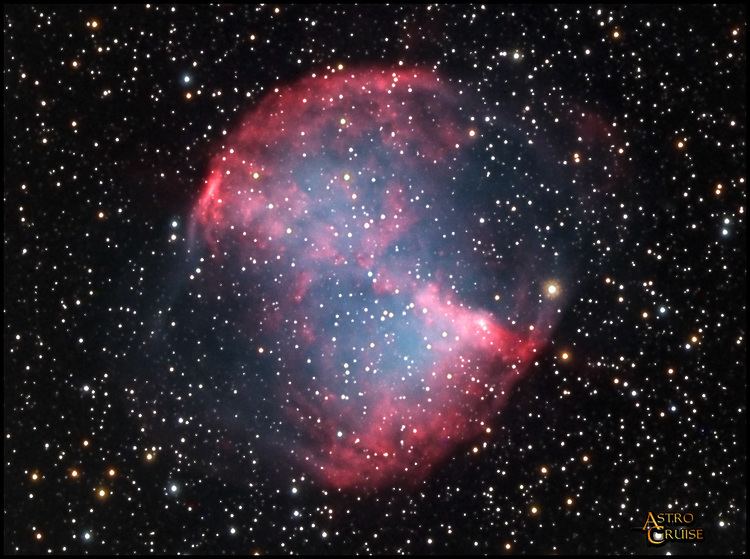
This object was the first planetary nebula to be discovered; by Charles Messier in 1764. At its brightness of visual magnitude 7.5 and its diameter of about 8 arcminutes, it is easily visible in binoculars, and a popular observing target in amateur telescopes.
Little dumbbell nebula m76 deep sky videos
Structure
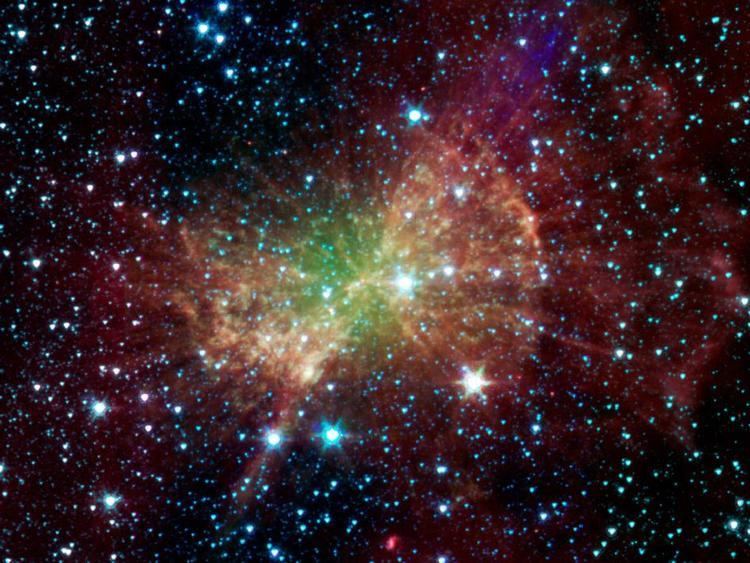
The Dumbbell Nebula appears to be shaped like an prolate spheroid and is viewed from our perspective along the plane of its equator. In 1992, Moreno-Corral et al. computed that its rate of expansion in the plane of the sky was no more than 2.3" per century. From this, an upper limit to the age of 14,600 yr may be determined. In 1970, Bohuski, Smith, and Weedman found an expansion velocity of 31 km/s. Given its semi-minor axis radius of 1.01 ly, this implies that the kinematic age of the nebula is some 9,800 years.
Knots
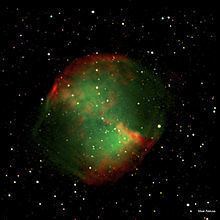
Like many nearby planetary nebulae, the Dumbbell contains knots. Its central region is marked by a pattern of dark and bright cusped knots and their associated dark tails (see picture). The knots vary in appearance from symmetric objects with tails to rather irregular tail-less objects. Similarly to the Helix Nebula and the Eskimo Nebula, the heads of the knots have bright cusps which are local photoionization fronts.
Central star
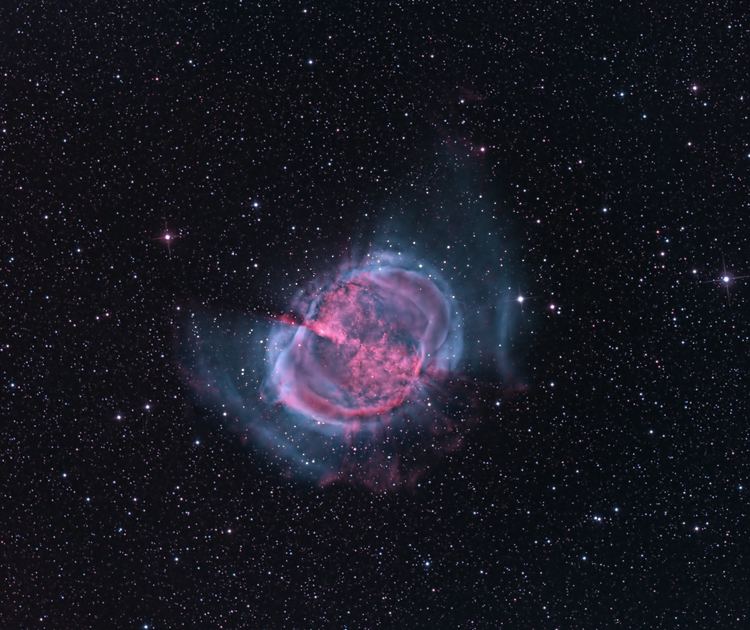
The central star, a white dwarf, is estimated to have a radius which is 6998550000000000000♠0.055±0.02 R☉ which gives it a size larger than any other known white dwarf. The central star mass was estimated in 1999 by Napiwotzki to be 6999560000000000000♠0.56±0.01 M☉.
